
Find Help
More Items From Ergsy search
-

What is Paracetamol?
Relevance: 100%
-

What is Paracetamol?
Relevance: 100%
-

Is Paracetamol the same as Aspirin?
Relevance: 93%
-

Is paracetamol linked to autism?
Relevance: 93%
-

Does Paracetamol reduce inflammation?
Relevance: 91%
-

What is a common use of paracetamol?
Relevance: 91%
-

What are the side effects of Paracetamol?
Relevance: 89%
-

Is it safe to take Paracetamol with Ibuprofen?
Relevance: 88%
-

Can Paracetamol be used in pregnant women?
Relevance: 87%
-
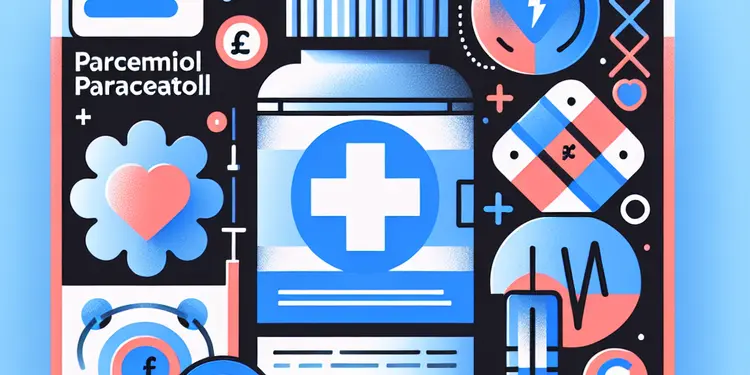
Why is there concern about paracetamol and autism?
Relevance: 86%
-

Which one is better for headaches: Aspirin or Paracetamol?
Relevance: 84%
-
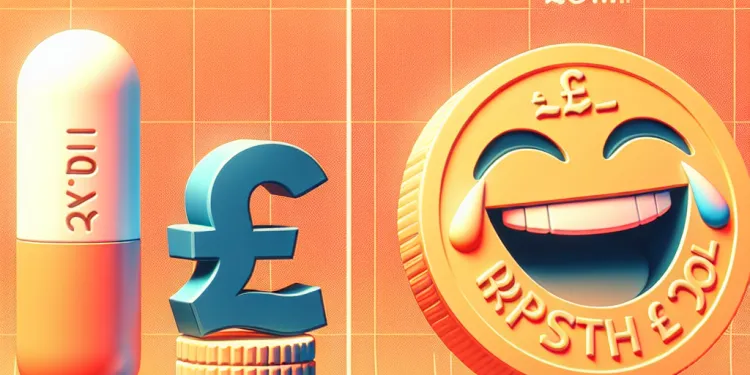
Which one is better for toothache: Ibuprofen or Paracetamol?
Relevance: 83%
-

What is the difference between Aspirin, Paracetamol, and Ibuprofen?
Relevance: 82%
-
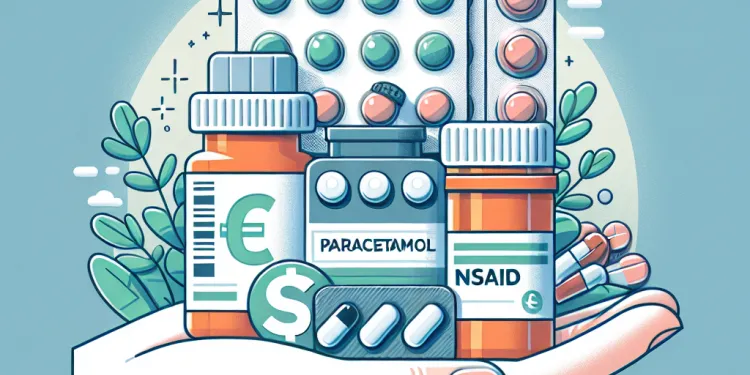
Why might someone choose Paracetamol over NSAIDs?
Relevance: 82%
-

Is there any scientific evidence that links paracetamol use to autism?
Relevance: 81%
-

Is there any risk of using paracetamol outside of pregnancy with regard to autism?
Relevance: 80%
-

What should pregnant individuals consider when taking paracetamol?
Relevance: 79%
-

Can I take ibuprofen and paracetamol together? - Common Health Questions | NHS
Relevance: 76%
-
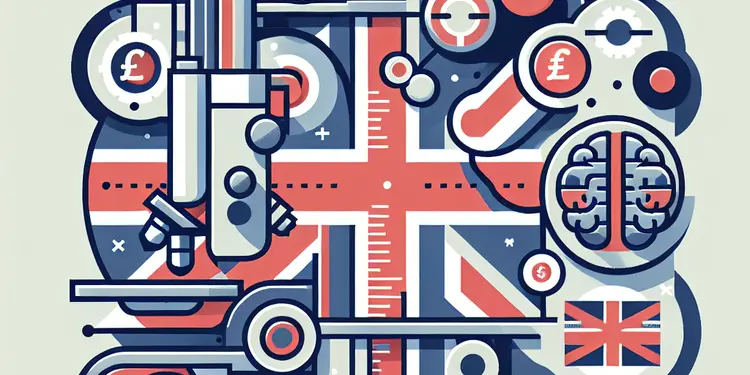
What can cause autism, if not paracetamol?
Relevance: 59%
-

How prevalent is the use of paracetamol during pregnancy?
Relevance: 58%
-

What are the limitations of studies examining paracetamol use and autism?
Relevance: 55%
-

Has paracetamol been linked to other developmental issues besides autism?
Relevance: 51%
-

Have there been any recent changes in guidelines regarding paracetamol use and pregnancy?
Relevance: 49%
-

Are Tylenol and Paracetamol the same?
Relevance: 47%
-

Have any major health organizations advised against using paracetamol during pregnancy due to autism concerns?
Relevance: 44%
-

What do researchers say about the link between paracetamol and autism?
Relevance: 32%
-

Are there safer alternatives to paracetamol for pregnant individuals experiencing pain or fever?
Relevance: 32%
-

Advice if your child has... A High temperature
Relevance: 29%
-

Caring for a child with fever | NHS
Relevance: 26%
-

How to deal with period pain | NHS
Relevance: 20%
-

How to treat an insect bite or sting | NHS
Relevance: 20%
-

How can I treat a cold at home?
Relevance: 19%
-

How to treat earache | NHS
Relevance: 19%
-
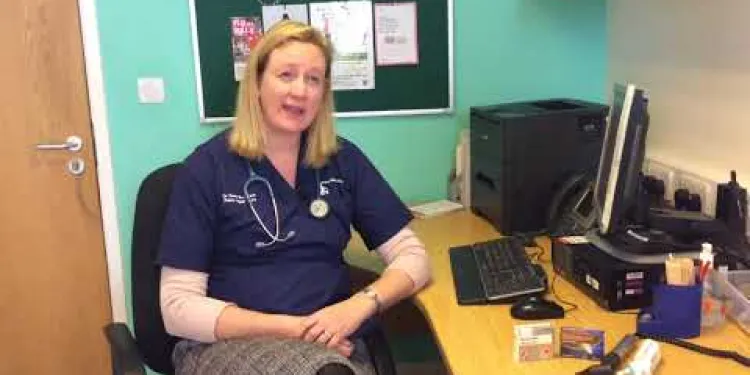
Self care: Treating ear infections
Relevance: 19%
-
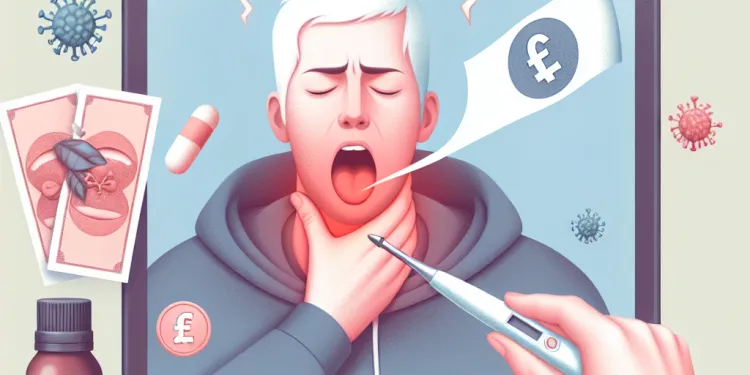
What is the best way to treat a sore throat from a cold?
Relevance: 19%
-

How to Keep a Child With Chickenpox Comfortable
Relevance: 18%
-

How to treat a sprained ankle
Relevance: 18%
-

What should someone from the UK do if they think they have Zika virus after traveling?
Relevance: 18%
-

Is there a treatment for measles?
Relevance: 18%
-

Which medication should be avoided for children with fevers?
Relevance: 18%
What is Paracetamol?
Paracetamol, also known as acetaminophen, is one of the most commonly used pain relievers and fever reducers available over the counter in the UK. It is widely used for the relief of headaches, muscle aches, toothaches, colds, influenza, arthritis, and other types of mild to moderate pain.
How Does Paracetamol Work?
Paracetamol works by inhibiting the production of prostaglandins in the brain. Prostaglandins are chemicals that promote inflammation, pain, and fever. By reducing the production of these chemicals, paracetamol helps to alleviate pain and lowers fever. Unlike non-steroidal anti-inflammatory drugs (NSAIDs) such as ibuprofen, paracetamol does not significantly reduce inflammation in areas other than the brain.
Uses and Benefits
Paracetamol is highly appreciated for its ability to relieve mild to moderate pain and reduce fever without the gastrointestinal side effects often associated with NSAIDs. It is considered safe for use in most adults and children when taken as directed. Paracetamol is often recommended for people who experience side effects from aspirin or ibuprofen as it does not irritate the stomach lining and is considered less harsh on the kidney and gastric system.
Dosage and Administration
The recommended dose for adults is typically 500mg to 1,000mg every four to six hours, with a maximum daily limit of 4,000mg. It is important to adhere to this dosage guideline to avoid the risk of overdose, which can lead to severe liver damage. In children, the dosage is usually calculated based on the child's weight, and it is crucial for caregivers to follow the guidance provided by a healthcare professional or the packaging instructions.
Possible Side Effects
When used appropriately, paracetamol is usually well-tolerated. However, some individuals may experience side effects. These can include allergic reactions such as skin rashes or swelling, and very rarely, it may cause blood disorders or liver issues. It is vital to seek medical advice if any unusual symptoms occur after taking paracetamol.
Precautions and Interactions
While paracetamol is considered safe for most people, those with liver or kidney problems should exercise caution and consult their healthcare provider before use. It is also important not to consume alcohol while taking paracetamol, as this combination can increase the risk of liver damage. Furthermore, individuals should be aware of the risk of "hidden" paracetamol present in many combination medications, such as cold and flu remedies, to avoid unintentional overdose.
Conclusion
Paracetamol is a valuable medication for managing mild to moderate pain and fever. When used correctly, it is effective and safe for most people. Nevertheless, it is essential to adhere to recommended dosages and consider professional healthcare advice, particularly if you have existing health concerns or are using other medications.
What is Paracetamol?
Paracetamol is a medicine that helps make pain and fever go away. Many people use it for things like headaches, muscle pain, and colds. You can buy it easily in the UK without a doctor’s note.
How Does Paracetamol Work?
Paracetamol works by stopping certain chemicals in the brain that cause pain and fever. This makes you feel better. It is different from some other medicines like ibuprofen because it mainly works in the brain and doesn’t help much with swelling.
Uses and Benefits
People like paracetamol because it helps with pain and fever without hurting the stomach, unlike some other medicines. It is safe for most adults and kids when used properly. If aspirin or ibuprofen bothers your stomach, paracetamol might be a better choice.
Dosage and Administration
Adults can take 500mg to 1,000mg every 4 to 6 hours but should not take more than 4,000mg a day. Taking too much can hurt your liver. For kids, the dose depends on their weight, so follow the doctor’s or package instructions.
Possible Side Effects
Most people don’t have problems with paracetamol, but some might. Be careful if you notice things like a rash or swelling. These could be allergic reactions. If you feel strange after taking paracetamol, talk to a doctor.
Precautions and Interactions
If you have liver or kidney problems, ask your doctor before taking paracetamol. Don’t drink alcohol when taking paracetamol, as this can harm your liver. Also, check other medicines for paracetamol to avoid taking too much by accident.
Conclusion
Paracetamol is good for taking away pain and fever. It is safe when used right. Always follow the dosage rules and talk to a doctor if you have health concerns or are taking other medicines.
Frequently Asked Questions
What is Paracetamol?
Paracetamol is a common pain reliever and fever reducer.
What are the uses of Paracetamol?
Paracetamol is used to treat mild to moderate pain and reduce fever.
Is Paracetamol an anti-inflammatory drug?
No, Paracetamol is not an anti-inflammatory drug; it does not reduce inflammation.
Can Paracetamol be used for headaches?
Yes, Paracetamol is often used to relieve headaches.
What are the other names for Paracetamol?
Paracetamol is also known as acetaminophen in some countries.
Is Paracetamol available over-the-counter?
Yes, Paracetamol is commonly available over-the-counter.
Can children take Paracetamol?
Yes, but the dosage should be appropriate for their age and weight.
What is the typical dosage of Paracetamol for adults?
The typical adult dose is 500 mg to 1000 mg every 4 to 6 hours, not exceeding 4000 mg per day.
What are the side effects of Paracetamol?
Side effects are rare but can include allergic reactions and liver damage with overdose.
Can Paracetamol be taken with other medications?
Paracetamol can generally be taken with other medications, but it's important to avoid combining it with other products containing paracetamol to prevent overdose.
Is Paracetamol safe during pregnancy?
Paracetamol is generally considered safe during pregnancy, but it's best to consult a doctor.
How does Paracetamol work?
Paracetamol works by inhibiting the production of prostaglandins in the brain which help to reduce pain and fever.
Can Paracetamol be taken on an empty stomach?
Yes, Paracetamol can be taken with or without food.
Is an overdose of Paracetamol dangerous?
Yes, an overdose can cause serious liver damage and is potentially life-threatening. Medical attention is necessary immediately.
How long does it take for Paracetamol to start working?
Paracetamol usually starts working within 30 minutes to an hour.
Can Paracetamol be used for arthritis pain?
Paracetamol can help relieve mild arthritis pain, but it doesn't address inflammation.
Are there alternatives to Paracetamol?
Alternatives for pain relief include ibuprofen and aspirin, but their suitability depends on individual health conditions.
Is long-term use of Paracetamol safe?
Long-term use could lead to liver damage if taken in high doses. Always follow medical advice for extended use.
How should Paracetamol be stored?
Paracetamol should be stored at room temperature, away from moisture and heat.
Can Paracetamol cause allergic reactions?
Although rare, some people may experience allergic reactions to Paracetamol, such as rashes or swelling.
What is Paracetamol?
Paracetamol is a type of medicine.
You can take it if you have a headache or if your body hurts.
It helps to make the pain go away.
If you want to know more, ask a doctor or a nurse.
You can use pictures or videos to help understand better.
Paracetamol is a medicine. It helps make pain go away and can bring down a fever.
What can you use Paracetamol for?
Paracetamol is a medicine. It helps you feel better when you have a headache or a fever. It can also help with other pains.
If you take Paracetamol, make sure you read the label. Ask an adult to help you if you find it hard to understand.
You can use tools like a talking app to read the instructions out loud. Or, you can use pictures to help explain what Paracetamol does.
Paracetamol helps when you have a little or medium pain. It also helps to bring down a high temperature.
Does Paracetamol help with swelling?
No, paracetamol does not help with swelling. It is used to reduce pain and fever. If you have swelling, you might need a different medicine.
Tip: You can use pictures or ask someone for help if you find this hard to understand.
Paracetamol is a medicine. It does not help with swelling.
Can I use Paracetamol for headaches?
Yes, you can use Paracetamol to help with headaches. It is a type of medicine. Always follow the instructions on the box or ask a grown-up for help.
If you're not sure, ask a doctor or a pharmacist. They can tell you if it's okay for you.
Use things like a glass of water to help swallow tablets. You can also set a timer so you don't forget when to take your medicine. Remember to rest too, as it can help make headaches go away.
Yes, you can take Paracetamol to help with a headache.
What Else is Paracetamol Called?
Paracetamol has other names too. These names can be:
- Acetaminophen
- Tylenol
To help remember, try making a list or drawing pictures. You can also ask someone to say the names with you.
Paracetamol is a type of medicine. In some places, it is called acetaminophen.
Can you buy paracetamol at the store?
Yes, you can buy paracetamol at the store. You do not need a doctor's note.
If you need help:
- Ask someone you trust.
- Use pictures and symbols to find the right box.
- Talk to a pharmacist for advice.
Yes, you can buy Paracetamol at the store without a doctor.
Can kids have Paracetamol?
Yes, kids can have Paracetamol. It helps with pain and fever.
Always follow the doctor's advice or read the label on the medicine. This tells you the right amount to give.
If you're unsure, ask a doctor or a pharmacist. They can help you.
Yes, but make sure they get the right amount for how old they are and how much they weigh.
How much Paracetamol should adults take?
Adults can usually take 1 or 2 tablets of Paracetamol every 4 to 6 hours. Don't take more than 8 tablets in one day.
Always read the medicine label, or ask a doctor or pharmacist if you're not sure.
You might find it helpful to use reminders, like phone alarms, to take your medicine at the right time.
Adults can take 500 mg to 1000 mg every 4 to 6 hours. Do not take more than 4000 mg in one day.
What can happen if you take Paracetamol?
Side effects do not happen often, but they might include being allergic or hurting your liver if you take too much.
Can I take paracetamol with other medicines?
Sometimes you might need to take paracetamol and other medicine. Ask a doctor or pharmacist to make sure it is safe.
Helpful things you can do:
- Use a pill organizer to keep track of your medicine.
- Ask someone you trust to help you check your medicine.
- Read the labels on the medicine box.
You can usually take paracetamol with other medicines. But do not take it with other things that also have paracetamol in them. This can make you take too much.
Can you take Paracetamol when you are pregnant?
Paracetamol is a medicine for pain and fever. It is usually safe when you are pregnant. But you should talk to a doctor first.
Here are some tips:
- Ask a doctor if you can take Paracetamol.
- Take the right amount. Do not take too much.
- If you feel sick, tell your doctor.
You can also ask someone you trust for help or read easy health guides.
Paracetamol is a medicine that is usually safe to take when you are pregnant. But it's a good idea to talk to your doctor first.
How does Paracetamol work?
Paracetamol is a medicine. It helps when you have pain or a fever. It tells the body to stop making something that causes pain and fever. This is why you feel better.
If you have pain or fever, you can ask an adult for help. They can give you Paracetamol.
Try using tools like picture charts or apps that explain medicines. They can help you understand better.
Paracetamol helps to stop something called prostaglandins in the brain. This makes pain and fever go away.
Can you take Paracetamol without eating first?
Yes, you can take Paracetamol without having food.
Here are some tips to help:
- Read the instructions on the box.
- Drink a glass of water with the tablet.
- Ask an adult if you are unsure.
Yes, you can take Paracetamol with food or without food. It's your choice.
Can taking too much Paracetamol be harmful?
Yes, taking too much Paracetamol is dangerous. It can make you very sick.
If you feel sick after taking Paracetamol, tell an adult right away. They can help you see a doctor.
Remember:
- Always follow the instructions on the medicine bottle.
- Ask an adult if you are not sure how much to take.
- Keep medicine in a safe place where children cannot reach it.
For help with reading, you can ask a family member or friend. You can also use an audiobook to listen instead of reading.
Yes, taking too much medicine can hurt your liver a lot. It can be very dangerous. You need to see a doctor right away.
How long before Paracetamol starts to help?
Paracetamol can help you feel better when you are in pain or have a fever. It usually starts working in about 30 minutes after you take it. Remember to follow the instructions on the bottle or from your doctor.
Tools to help:
- Set a timer for 30 minutes after you take Paracetamol.
- Use a pill organizer to help you take the right amount.
- Ask an adult for help if you are not sure how to take it.
Paracetamol starts to help your body feel better in about 30 minutes to 1 hour.
Can Paracetamol Help with Arthritis Pain?
Do you have arthritis? It can make your joints hurt. Paracetamol is a medicine that can help with pain. You can ask your doctor or nurse if Paracetamol is good for your pain.
If reading is hard, you can:
- Ask someone to read it to you.
- Use apps that read out loud.
- Look at pictures or videos that explain it.
Paracetamol can help with small arthritis pain, but it does not help with swelling.
Can I use something else instead of Paracetamol?
There are other ways to help with pain, like taking ibuprofen or aspirin. But, it's important to check if they are safe for you based on your health.
Is it safe to use Paracetamol for a long time?
If you take Paracetamol for many days, is it okay for your body?
Ask a doctor: It's important to talk to a doctor if you need to use Paracetamol for more than a few days.
Use extra help: You can ask someone you trust for help to understand more about Paracetamol. You can also use pictures or videos to learn.
Taking a lot of this medicine for a long time can hurt your liver. Always listen to your doctor if you need to take it for many days.
How to Keep Paracetamol Safe?
Put Paracetamol in a cool, dry place.
Keep it away from sunlight.
Keep it where children cannot reach it.
Helpful tips:
- Use a cupboard with a lock.
- Check the expiry date before use.
- Ask an adult if you need help.
Keep paracetamol in a cool, dry place. Make sure it's not too hot or wet.
Can Paracetamol cause allergies?
Sometimes, people may have a bad reaction to paracetamol. This is called an allergy.
If you feel sick after taking paracetamol, tell an adult or a doctor.
Here are some tools to help:
- Use pictures or drawings to explain.
- Talk to someone you trust about it.
- Ask a doctor for more information.
Sometimes, people can have an allergic reaction to Paracetamol. This does not happen often. If it happens, you might see a rash on your skin or have swelling on your body.
Useful Links
- Ergsy carfully checks the information in the videos we provide here.
- Videos shown by Youtube after a video has completed, have NOT been reviewed by ERGSY.
- To view, click the arrow in centre of video.
- Most of the videos you find here will have subtitles and/or closed captions available.
- You may need to turn these on, and choose your preferred language.
- Go to the video you'd like to watch.
- If closed captions (CC) are available, settings will be visible on the bottom right of the video player.
- To turn on Captions, click settings .
- To turn off Captions, click settings again.
More Items From Ergsy search
-

What is Paracetamol?
Relevance: 100%
-

What is Paracetamol?
Relevance: 100%
-

Is Paracetamol the same as Aspirin?
Relevance: 93%
-

Is paracetamol linked to autism?
Relevance: 93%
-

Does Paracetamol reduce inflammation?
Relevance: 91%
-

What is a common use of paracetamol?
Relevance: 91%
-

What are the side effects of Paracetamol?
Relevance: 89%
-

Is it safe to take Paracetamol with Ibuprofen?
Relevance: 88%
-

Can Paracetamol be used in pregnant women?
Relevance: 87%
-

Why is there concern about paracetamol and autism?
Relevance: 86%
-

Which one is better for headaches: Aspirin or Paracetamol?
Relevance: 84%
-

Which one is better for toothache: Ibuprofen or Paracetamol?
Relevance: 83%
-

What is the difference between Aspirin, Paracetamol, and Ibuprofen?
Relevance: 82%
-

Why might someone choose Paracetamol over NSAIDs?
Relevance: 82%
-

Is there any scientific evidence that links paracetamol use to autism?
Relevance: 81%
-

Is there any risk of using paracetamol outside of pregnancy with regard to autism?
Relevance: 80%
-

What should pregnant individuals consider when taking paracetamol?
Relevance: 79%
-

Can I take ibuprofen and paracetamol together? - Common Health Questions | NHS
Relevance: 76%
-

What can cause autism, if not paracetamol?
Relevance: 59%
-

How prevalent is the use of paracetamol during pregnancy?
Relevance: 58%
-

What are the limitations of studies examining paracetamol use and autism?
Relevance: 55%
-

Has paracetamol been linked to other developmental issues besides autism?
Relevance: 51%
-

Have there been any recent changes in guidelines regarding paracetamol use and pregnancy?
Relevance: 49%
-

Are Tylenol and Paracetamol the same?
Relevance: 47%
-

Have any major health organizations advised against using paracetamol during pregnancy due to autism concerns?
Relevance: 44%
-

What do researchers say about the link between paracetamol and autism?
Relevance: 32%
-

Are there safer alternatives to paracetamol for pregnant individuals experiencing pain or fever?
Relevance: 32%
-

Advice if your child has... A High temperature
Relevance: 29%
-

Caring for a child with fever | NHS
Relevance: 26%
-

How to deal with period pain | NHS
Relevance: 20%
-

How to treat an insect bite or sting | NHS
Relevance: 20%
-

How can I treat a cold at home?
Relevance: 19%
-

How to treat earache | NHS
Relevance: 19%
-

Self care: Treating ear infections
Relevance: 19%
-

What is the best way to treat a sore throat from a cold?
Relevance: 19%
-

How to Keep a Child With Chickenpox Comfortable
Relevance: 18%
-

How to treat a sprained ankle
Relevance: 18%
-

What should someone from the UK do if they think they have Zika virus after traveling?
Relevance: 18%
-

Is there a treatment for measles?
Relevance: 18%
-

Which medication should be avoided for children with fevers?
Relevance: 18%


